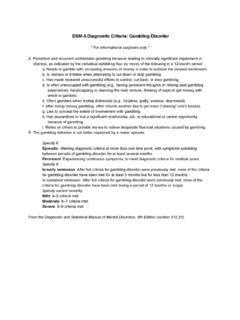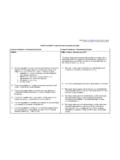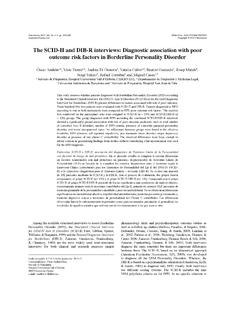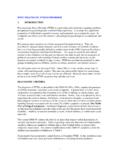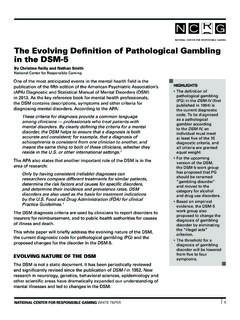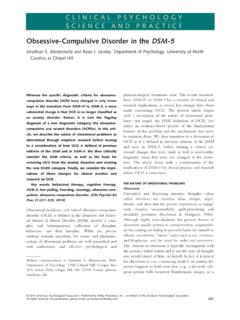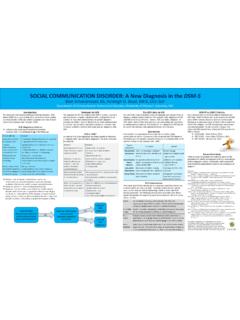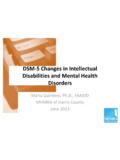Transcription of Rome III Diagnostic Criteria for Functional ...
1 Appendix ARome III Diagnostic Criteria forFunctional Gastrointestinal Disorders Appendix A: Rome III Diagnostic Criteria for FGIDsA. Functional Esophageal DisordersA1. Functional HeartburnDiagnostic Criteria * Must include all of the following: . Burning retrosternal discomfort or pain . Absence of evidence that gastroesophageal acid reflux is the cause of the symptom . Absence of histopathology-based esophageal motility disorders* Criteria fulfilled for the last months with symptom onset at least months prior to diagnosisA2. Functional Chest Pain of Presumed Esophageal OriginDiagnostic Criteria * Must include all of the following: . Midline chest pain or discomfort that is not of burning quality . Absence of evidence that gastroesophageal reflux is the cause of the symptom.
2 Absence of histopathology-based esophageal motility disorders* Criteria fulfilled for the last months with symptom onset at least months prior to diagnosisA3. Functional DysphagiaDiagnostic Criteria * Must include all of the following: . Sense of solid and/or liquid foods sticking, lodging, or passing abnormally through the esophagus . Absence of evidence that gastroesophageal reflux is the cause of the symptom . Absence of histopathology-based esophageal motility disorders* Criteria fulfilled for the last months with symptom onset at least months prior to diagnosisA4. GlobusDiagnostic Criteria * Must include all of the following: . Persistent or intermittent, nonpainful sensation of a lump or foreign body in the throat.
3 Occurrence of the sensation between meals . Absence of dysphagia or odynophagia . Absence of evidence that gastroesophageal reflux is the cause of the symptom . Absence of histopathology-based esophageal motility disorders* Criteria fulfilled for the last months with symptom onset at least months prior to diagnosisAppendix A: Rome III Diagnostic Criteria for FGIDs B. Functional Gastroduodenal DisordersB1. Functional DYSPEPSIA Diagnostic Criteria * Must include: . One or more of the following: a. Bothersome postprandial fullness b. Early satiation c. Epigastric pain d. Epigastric burning AND . No evidence of structural disease (including at upper endoscopy) that is likely to explain the symptoms* Criteria fulfilled for the last months with symptom onset at least months prior to diagnosisB1a.
4 Postprandial Distress SyndromeDiagnostic Criteria * Must include one or both of the following: . Bothersome postprandial fullness, occurring after ordinary-sized meals, at least several times per week . Early satiation that prevents finishing a regular meal, at least several times per week * Criteria fulfilled for the last months with symptom onset at least months prior to diagnosisSupportive Criteria . Upper abdominal bloating or postprandial nausea or excessive belching can be present . Epigastric pain syndrome may coexistB1b. Epigastric Pain SyndromeDiagnostic Criteria * Must include all of the following: . Pain or burning localized to the epigastrium of at least moderate severity, at least once per week.
5 The pain is intermittent . Not generalized or localized to other abdominal or chest regions . Not relieved by defecation or passage of flatus . Not fulfilling Criteria for gallbladder and sphincter of Oddi disorders* Criteria fulfilled for the last months with symptom onset at least months prior to diagnosisSupportive Criteria . The pain may be of a burning quality, but without a retrosternal component . The pain is commonly induced or relieved by ingestion of a meal, but may occur while fasting . Postprandial distress syndrome may coexist Appendix A: Rome III Diagnostic Criteria for FGIDsB2. BELCHING DISORDERSB2a. AerophagiaDiagnostic Criteria * Must include all of the following: . Troublesome repetitive belching at least several times a week.
6 Air swallowing that is objectively observed or measured* Criteria fulfilled for the last months with symptom onset at least months prior to diagnosisB2b. Unspecified Excessive BelchingDiagnostic Criteria * Must include all of the following: . Troublesome repetitive belching at least several times a week . No evidence that excessive air swallowing underlies the symptom* Criteria fulfilled for the last months with symptom onset at least months prior to diagnosisB3. NAUSEA AND VOMITING DISORDERSB3a. Chronic Idiopathic NauseaDiagnostic Criteria * Must include all of the following: . Bothersome nausea occurring at least several times per week . Not usually associated with vomiting . Absence of abnormalities at upper endoscopy or metabolic disease that explains the nausea* Criteria fulfilled for the last months with symptom onset at least months prior to diagnosisB3b.
7 Functional VomitingDiagnostic Criteria * Must include all of the following: . On average one or more episodes of vomiting per week . Absence of Criteria for an eating disorder, rumination, or major psychiatric disease according to DSM-IV . Absence of self-induced vomiting and chronic cannabinoid use and absence of abnormalities in the central nervous system or metabolic diseases to explain the recurrent vomiting* Criteria fulfilled for the last months with symptom onset at least months prior to diagnosisAppendix A: Rome III Diagnostic Criteria for FGIDs B3c. Cyclic Vomiting SyndromeDiagnostic Criteria Must include all of the following: . Stereotypical episodes of vomiting regarding onset (acute) and duration (less than one week).
8 Three or more discrete episodes in the prior year . Absence of nausea and vomiting between episodesSupportive criterion History or family history of migraine headachesB4. Rumination Syndrome in AdultsDiagnostic Criteria Must include both of the following: . Persistent or recurrent regurgitation of recently ingested food into the mouth with subsequent spitting or remastication and swallowing . Regurgitation is not preceded by retchingSupportive Criteria . Regurgitation events are usually not preceded by nausea . Cessation of the process when the regurgitated material becomes acidic . Regurgitant contains recognizable food with a pleasant tasteC. Functional Bowel DisordersC1. Irritable Bowel SyndromeDiagnostic criterion*Recurrent abdominal pain or discomfort** at least days/month in the last months associated with two or more of the following.
9 Improvement with defecation . Onset associated with a change in frequency of stool . Onset associated with a change in form (appearance) of stool* Criterion fulfilled for the last months with symptom onset at least months prior to diagnosis** Discomfort means an uncomfortable sensation not described as pathophysiology research and clinical trials, a pain/discomfort frequency of at least days a week during screening evaluation is recommended for subject Functional BloatingDiagnostic Criteria * Must include both of the following: . Recurrent feeling of bloating or visible distension at least days/month in the last months . Insufficient Criteria for a diagnosis of Functional dyspepsia, irritable bowel syndrome, or other Functional GI disorder* Criteria fulfilled for the last months with symptom onset at least months prior to diagnosis Appendix A: Rome III Diagnostic Criteria for FGIDsC3.
10 Functional ConstipationDiagnostic Criteria * . Must include two or more of the following: a. Straining during at least % of defecations b. Lumpy or hard stools in at least % of defecations c. Sensation of incomplete evacuation for at least % of defecations d. Sensation of anorectal obstruction/blockage for at least % of defecations e. Manual maneuvers to facilitate at least % of defecations ( , digital evacuation, support of the pelvic floor) f. Fewer than three defecations per week . Loose stools are rarely present without the use of laxatives . Insufficient Criteria for irritable bowel syndrome* Criteria fulfilled for the last months with symptom onset at least months prior to diagnosisC4.
